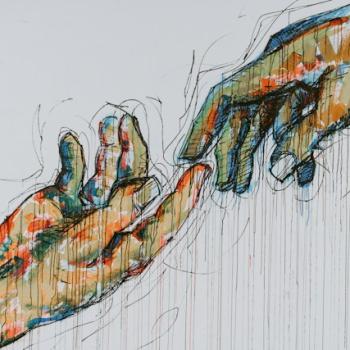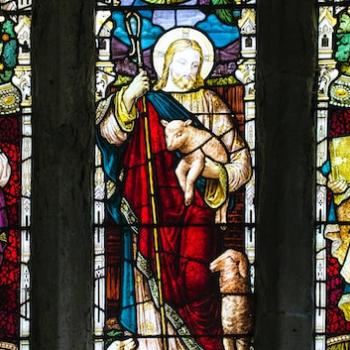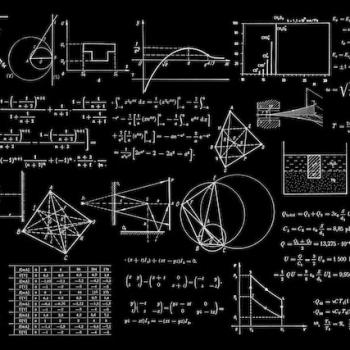Holy Week has led to this day: Easter Sunday. Perhaps taking a closer look at what we mean by “salvation” can bring us closer to the real “good news.”

What a week it’s been! On Palm Sunday, I suggested that a significant problem with organized religion today is language. Then on Monday, I proposed that “humanity” and “divinity” might not be the opposite terms we usually think they are. On Tuesday, I played with non-traditional ways of understanding what we mean when we use the word “God.”
On Wednesday, I explored concepts like Satan, heaven, and hell in a contemporary context. For Holy Thursday, I played with definitions of sin and prayer that might better align with a more modern understanding of “God.” Then on Good Friday, I discussed three critical elements in the gospel reading that point to a more modern interpretation of religious language that makes sense in our world today.
I took Holy Saturday off from writing to listen for what might be stirring inside me about the reality of Easter. So here we are!
First, let’s get a critical question out of the way. Did the Jesus of history truly come back to life? Did he experience a literal, bodily resuscitation three days after he died? I don’t have an answer to that. But I do have some thoughts about the answers that people commonly give.
Easter Answer #1
Many people answer with, “Of course! It was necessary for salvation. Jesus had to die because of our sins, and God had to raise him back to life to show that new life awaits us as well after we die.” I’m not too sure about this answer.
I have written before that I’m no fan of the substitutionary atonement theory, which holds that God sent Jesus as the “sacrificial lamb” who took on our sin to free us from it. I see several problems with this viewpoint:
- It makes God into a supernatural being primarily interested in punishment. As I have written before, I do not understand God as a spirit-being in the heavens that makes choices about our lives. But I do understand our need to explain the unexplainable in the only way we know how – in human terms. We create God in our own image. Countless stories throughout the Old Testament demonstrate God as a loving and generous but also angry and vengeful king.
- It makes Jesus into a tool, a means to an end. I cannot think of the person of Jesus in that way. But I do understand that the language of sacrifice was a crucial part of the religious understanding of the Jews during Jesus’ time and long before. It makes sense that the early Christians would understand their faith through the lens of “sacrifice.”
- It makes the crux of religious faith into a transaction. I think the heart and soul of religious faith should be transformation. Transformation is a process of evolving into greater, richer experiences of unity. Transaction is a process of exchanging one thing for another.
Easter Answer #2
Others answer the question about Jesus being resurrected in flesh and blood by saying, “He had to be bodily raised from death, or his message and ministry would have been for nothing.” I’m not too sure about that one. If Jesus weren’t raised, would that print a big red X on everything he taught? Would everything his disciples experienced during his life and everything we encounter in the scriptures be null and void if he stayed in the tomb? I’m not sure.
Easter Answer #3
Some answer the question by saying, “Jesus could not have been literally, physically brought back to life three days after his death because this is a scientific, medical impossibility.” I’ve written before that I can’t accept a belief system that doesn’t align with established science and my life experience. Coming back to life aligns with neither.
But that answer, too, comes up short. Surely, there had to be some experience of “new life” after Jesus died. There had to be something so amazing, so life-changing, that Jesus’ followers experienced after his death that made them go on to suffer their own persecutions and deaths because of it.
Beyond Easter Answers
As I said, a corpse three days in coming back to life does not align with science or my own experience of the world. But it does align with the overall pattern of the universe.
As I write this, the sun is poised atop its celestial abode nursing all life on earth with the mysterious milk we call light, just as it did yesterday and will again tomorrow. Spring blooms are bursting forth from what just a few weeks ago looked like withered limbs. Caterpillars are gift-wrapping their tomorrows with a homespun shroud that will soon birth them into butterflies, just as they did last spring and this time millions of years ago and will again every year as the planet continues to twirl.
Right now, animals throughout this hemisphere are being roused again from hibernation, and newborn bears, bees, box turtles, groundhogs, and squirrels are once again populating a post-winter world, just like they’ve done for millions of years and will continue to as long as their planetary home agrees to welcome their arrival.
Life is more than just life. Somehow, some way, we get the deluxe, premium version of Life which comes with birth, growth, decline, death, and rebirth, all for the price of admission. And no ads.
Back to the Original Question
Don’t ask me if Jesus’ resurrection was a bodily resuscitation or a more spiritual experience of him, his message, and his ministry in some ridiculously transformative new way. I have no idea. And regardless, I’m not smart enough to propose a definitive answer even if God sent me a cheat sheet.
But I can suggest a way of understanding “salvation” that makes sense to me in today’s world. I do not believe Jesus needed to take on such horrible suffering to get us our Get Out of Jail Free card. But I do believe salvation is real.
If we came from God, live in God, and return to God, then that means we have divine DNA. Therefore, divinity and humanity aren’t opposites like we usually think; they may be two areas along a single continuum. Following that logic leads me to conclude that heaven and hell are literal places but rather conditions of being. And if God isn’t a supernatural, cloud-based puppeteer, then Satan must also be a handy way to talk about evil personified.
For me, prayer is anything we do internally or externally that reminds us of our divine DNA and the sacred unity we all participate in. Sin, then, is anything that disconnects us from this divine source. It’s failing to remember who and what we are.
So, What Did Easter Save Us From?
I do not think that the opposite of faith is doubt. Rather, the opposite of faith is fear. I think that’s what Holy Thursday, Good Friday, and Easter have saved us from. If when we die, our divine DNA returns to the sacred soup of Life that changes and evolves and continues on, then there’s nothing to be afraid of, right? Death isn’t an ending, only a transformation, just like the caterpillar’s cocoon and the darkness before the dawn and the brittle branches of winter that are creating the beginnings of new blooms deep within.
There is nothing to be afraid of. Nothing.
Does that mean that in understanding this, I will not be anxious or frightened anymore? Hell, no. I have many millions of years of evolutionary algorithms embedded deeply into my operating system. But knowing the truth of who I am, who you are, and what Life is means that I don’t have to live in the scary places. I can remember who and what I really am. I can reclaim my sacred birthright. And so can you.












